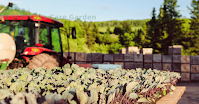Urban Horticulture: Essential Guides for Growing in Urban Environments
Urban horticulture is a rewarding activity that allows people to grow food, herbs and flowers even in limited urban spaces. If you are interested in beginning your journey into urban horticulture, this article will provide essential guides to help you succeed in your city gardening venture.
1. Choosing Suitable Space and Containers
Before starting your urban garden, it is important to choose the right location and appropriate containers:
- Space: Assess your available space. It could be a balcony, sunny window, terrace, shared yard or even a space indoors with adequate light.
- Containers: Choose appropriate containers such as pots, crates, raised beds or even grow bags. Make sure they have good drainage.
2. Plant Selection
The choice of plants is crucial to the success of your urban garden. Consider:
- Climate and Light: Choose plants that adapt to the climate of your region and the amount of sunlight available in your space.
- Herbs: Herbs such as basil, parsley, rosemary and mint are ideal for beginners and can be grown in small pots.
- Vegetables: Some vegetables that adapt well to urban spaces include tomatoes, peppers, lettuce and carrots.
- Flowers: Flowers like daisies, petunias, and begonias can add beauty to your space.
3. Soil Preparation and Fertilization
Soil plays a crucial role in healthy plant growth:
- Quality Soil: Use a high-quality soil or potting mix. Make sure it is well-drained and rich in nutrients.
- Fertilization: Fertilize your plants regularly with fertilizers suited to each plant's specific needs.
4. Proper Watering
Watering is a fundamental part of urban gardening:
- Frequency: Determine watering frequency based on individual plants' needs and soil moisture.
- Efficient Irrigation: Use efficient irrigation techniques, such as drip or automatic systems, to conserve water.
5. Pest and Disease Control
Monitor your plants regularly for pests and diseases:
- Identification: Learn to identify common pests and diseases in your plants.
- Control Methods: Use organic control methods, such as manual removal of pests, when possible, to avoid the use of chemicals.
6. Pruning and Maintenance
Carry out regular pruning to promote healthy plant growth:
- Leaf and Stem Pruning: Remove damaged or diseased leaves and stems to encourage growth and flowering.
- Pruning Fruits and Flowers: Remove excessive fruits or flowers to direct the plant's energy towards the development of others.
7. Community and Education
Join urban gardening communities and seek out educational resources:
- Share Experiences: Talk to other urban gardening enthusiasts to share experiences and learn from them.
- Online Resources: Explore blogs, forums and online videos that offer specific tips and guidance on urban horticulture.
What are urban horticulture guides?
Urban horticulture guides are written or visual resources that provide information, tips, and step-by-step instructions on how to grow edible plants in urban environments.
Why are urban horticulture guides useful?
These guides are useful because they help beginners and urban gardeners gain practical knowledge about growing food in limited and often challenging spaces.
What can I learn from urban horticulture guides?
You can learn about plant selection, soil preparation, planting, watering, pest and disease care, harvesting, and more.
Where can I find urban horticulture guides?
Urban horticulture guides can be found in books, magazines, websites, gardening blogs and social media channels dedicated to gardening.
What's the best way to choose an urban horticulture guide?
Choose a guide that is specific to your needs and experience level. Make sure the information is up to date and that the author has horticultural credentials.
Can I trust information from online urban horticulture guides?
Yes, as long as you choose reliable and reputable sources, such as university extension websites, botanical gardens, or proven gardening experts.
Are there urban horticulture guides for beginners?
Yes, many urban horticulture guides are designed specifically for beginners, providing basic information and step-by-step instructions.
What types of plants are often covered in urban horticulture guides?
Guides can cover a variety of plants, including vegetables, herbs, fruits, and even ornamentals suitable for urban spaces.
How can I use urban horticulture guides to maximize my urban gardening success?
Follow instructions carefully, be aware of the plants' specific needs, and learn by doing. It's also helpful to join local gardening groups or online communities to share experiences.
Are urban horticulture guides relevant to different regions and climates?
Some guides may be specific to regions or climates, while others provide general information that can be adapted to local conditions. Make sure you choose a guide that suits your environment.
Conclusion
Urban gardening is a rewarding way to grow your own food, herbs and flowers in urban settings. With the right choice of space, plants and care, you can create a lush and productive urban garden. Additionally, participating in gardening communities and seeking out educational resources can enrich your urban horticulture journey. So follow these essential guides to start your own gardening project in the city and enjoy the benefits of cultivating your own nature amid the concrete of urban life.


